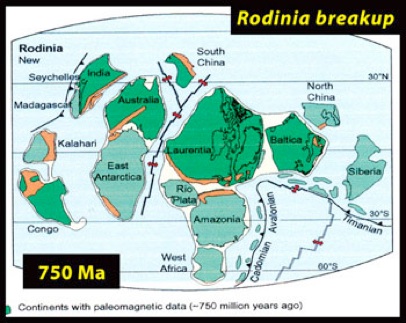Snowball Earth

Ice-covered Earth
based on www.snowballearth.org

Snowball Earth 700 my ago
Our local exposures of the Jacobsville offers scientists access to a critical time in Earth’s history. Life in the Jacobsville environment was building the Earth’s oxygen, which caused the redding of the rocks eventually building free oxygen in the atmosphere and the development of Earth’s ozone shield. It is likely that new fossils will be discovered in the Jacobsville as life forms may have begun diversification then. The atmospheric changes may have triggered the super ice ages that caused the entire ocean to freeze, a time called “snowball Earth”. It happened at least twice in the Proterozoic, we think, after the time of the Jacobsville. The snowball Earth cold periods dwarfed the more recent glaciations of the last 2 million years. Understanding the causes is important to the whole issue of global climate change---one of Earth’s most important current geoscience research focus.

Cyanobacteria
What does this have to do with the Jacobsville?
We need to know more about what was happening during the critical period before the snowball Earth. We need to study the organisms and various climate proxys that could exist there. It should be a very productive research focus for specialists in the future. Answers could clear up our understanding of climate change and global warming.

Neoproterozoic glaciations were Earth’s most extensive by far. We haven’t yet decided whether the snowball Earth was triggered or caused by Rodinia’s rifting.

Earth’s atmosphere is likely composed of cometary materials and elements degassed from earth’s volcanoes. In the early earth there was no free oxygen and the ocean was quite reducing, but all the acids from volcanoes helped keep the ocean quite acidic. The ocean is now quite oxidized and has a pH of 8.2. Meanwhile Earth’s atmosphere was devoid of oxygen and rich in CO2. Cyanobacteria lived in those early oceans and the water shielded them from deadly ultraviolet radiation from the sun. So they grew colonies and photosynthesized, releasing free oxygen. This oxygen slowly oxidized the ocean and eventually oxidized the atmosphere also. The red color of the Jacobsville attests to oxidation as many older surficial sediments are green in color reflecting reduced iron. Note how Jacobsville time at about 1 by before present just precedes two global glaciation events, and the rapid increase in atmospheric O2.


Earth without oceans is different in surprising ways. Atmospheric CO2 from volcanoes cannot dissolve in the ocean, so it builds up in the atmosphere, warming the whole Earth, which leads to deglaciation.

The arrangement of Earth’s continents is a major influence on global climate change. Rodinia was a giant continent located in a equatorial region during the Keweenaw rift, but it drifted to the south pole region from 1 by to about 600 my ago. When a continent is in a polar region, ice tends to cover it, as is the case in Antarctica today. Rodinia also rifted apart and formed many small continents beginning about 750 my ago. It is likely that the polar position of Rodinia was an important reason for Snowball Earth.



